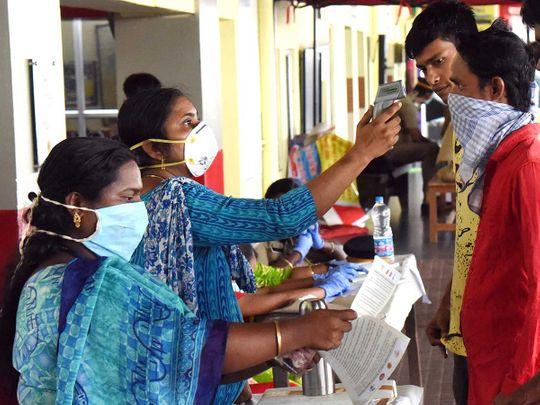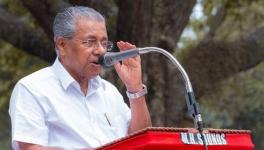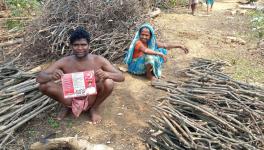COVID-19: Local Self-governments, SHGs Key to Tackling Pandemic in Kerala, Says Former Chief Secretary

Representational image. | Image Courtesy: Gulf News
As the number of COVID-19 cases continues to rise exponentially across the country, Kerala has emerged as the only state to have tackled the virus by flattening the curve. With this, the Kerala model has been hailed across the world for its success.
It should be mentioned that along with the efficiency of the state government and the public healthcare system in the state, the local self-governments and self help groups (SHGs) in the state have also played a crucial role in this. In a conversation with Bajranglal Sharma of School for Democracy, SM Vijyanand IAS, former Chief Secretary of Kerala and an expert in decentralised planning, narrated the role of both local self-governments and SHGs.
Vijayanand began by commenting on the emphasis on healthcare and education in the Kerala Model, saying, “Kerala historically has been known for what is called public action. People and government are close together. It started even during the Maharajas. Kerala is an organized society. Practically almost every person in Kerala would belong to some organization- Not one organization. We can call it social capital. In this context, Kerala started the literacy campaign which had become a national model where we tried mobilizing voluntary support going beyond politics and reaching out as a kind of social duty towards the illiterate and that became a good model. Unfortunately it hadn’t been picked up by the next government. In the mid 90s, big bang decentralization had been implemented. So the present efforts of the government should be seen in context of this kind of volunteerism which existed in the society which is mobilized by the government during literacy campaign, and then the people’s plan campaign which mobilized lots of people to do task for gram panchayat, block panchayats etc.”
Also read: Adapting, Adjusting and Evolving with a Virus
According to the former chief secretary of the state, historically, the Kerala model has focused on public health and education and they are related. In public health, the focus was on primary health. So every gram panchayat in Kerala has a primary health centre. Taluk hospitals or community health centre is with the block panchayats/municipalities, the district hospitals are with the district panchayats which means the primary and secondary health centres have been transferred to the local governments. The transfer means they work under the supervision of local governments though government pays the salary. For maintenance functions, money goes through panchayats. For development activities, about 50-60% of money goes through panchayats. So, there is working relationship between PHCs and panchayats. “It took 20-25 years to be in synchronised manner,” he said.
Talking about self-help groups, Vijayanand said, “All the states in India have fairly good SHGs except parts of UP and may be Punjab. There are 60 lakhs SHG of women across the country. Kerala went in for a programme which is called Kudumbasree which is now rated as the best across the country. The functioning of Kudumbasree is different from rest of SHGs. In Kerala, the focus was on women empowerment and broader development and some kind of social action, rather than only livelihood. In India, all SHGs except in Kerala are different from panchayats and they don’t work together. Our logic/philosophy was that they are institutions of social democracy and panchayats are institutions of political democracy. As Ambedkar reminded, we need social democracy much more than political democracy. Of course there were issues since panchayats are ruled by various political parties. We discussed all the issues whether the panchayats take over SHGs, whether SHGs become a parallel power centre etc.”
The welfare policies have survived in the state along with various governments across the political spectrum. Kerala has the largest education sector and private health sector. Recently, significant improvements have been made in the government sector. So much so, the recent statistics prove more people are coming to government hospitals now, more children are joining in government schools. This has been the results of government’s effort in collaboration with panchayats to improve service delivery through public institutions, Vijayanand said while explaining the base of Kerala Model.
“For the last 15 years, there has been a lot of emphasis on schemes of care and compassion and this is a conscious policy of the government mostly implemented through the panchayati raj system. This emphasis is fairly recent and panchayati raj institutions are performing very well in these kinds of things. Nowhere in India are these kinds of things entrusted on panchayats,” he added.
Again, there are other factors as well. “20-25 lakh people from Kerala are working abroad, mostly in the Gulf countries and some in Europe. There are about 25-30 lakh people from other states working in Kerala as well. People working in Gulf face harsh working conditions and living conditions. These experiences of Keralite in other countries help them to understand the conditions of migrant workers in the state a bit, he said.
Also read: COVID-19 in Rural India-XX: Life on Hold in Tripura
Not only these things, the state has also learned from the past experiences. “Then recent experiences of Kerala including two floods which affected most of the districts in Kerala in 2018 and 2019, the worst in 100 years. One feature that we have seen is that the flood relief function is not transferred to panchayats but it was with Revenue department. But, the initial relief and rescue have been done by the panchayats. Then, there has also been spontaneous community support including the support from the fisherfolks,” he said.
Second one is the experience of Nipah. “In the case of coronavirus, at least we know what it is. Nobody knew about Nipah. Nipah hit Kerala; its fatality is very high, around 75%. The health department actually learned it by after about 20 people lost their lives. However, they managed fairly well in the second time. Tackling Nipah, of course, they did it very scientifically, they contacted WHO, ICMR and experts and it was successful.”
Along with this, the Kerala gram panchayats are large and each panchayat has a population around 25,000. Also, the state government gives enough funds to all the local body governments. This year, the fund for local body government is around Rs 20,000 crore.
Thus, Kerala had already faced such emergency situation and made preparations. Even as news reports appeared in dailies about COVID-19 in China, the state had already put in place response mechanism to control the spread of the virus. “The preparedness was very important. Also the experiences from Nipah, taught how to trace contacts efficiently, then identifying the high risk people etc. Quarantine and contact tracing were the initial strategies,” Vijayanand. For this, the panchayats, SHGs and police were mobilised and this people along with the health officials took a tab on people who are suspected of having been exposed to the virus.
In every action, these decentralisation is evident and the local self governments and SHGs work in collaboration with the government. For example, the state government announced a Rs 20,000 crore relief package to deal with the economic crisis during the pandemic. Of course, all sections of the society including the migrant labourers have also been included in the package. Respecting the dignity of each and every individual, the state government has been trying to ensure that nobody is left behind.
For the people who are under observation and unable to cook, the government had initiated community kitchens in every panchayat. The panchayat officials along with SHGs identified the people who are in need of essential medicines and they collaborate with health department. These are just few examples of how SHGs and local self governments are an integral part of the plan of action.
It should be noted that at the time of Nipah, the samples were sent to Pune Virology Institute. After that, the state took steps to be equipped with testing and the virology lab in Alappuzha has been upgraded with new facilities. So, when it came to COVID-19, the Alappuzha lab was equipped to deal with the testing. Highlighting this point, Vijayanan said, “So the advancement of laboratory facility is important.”
“The treatments in Kerala are also very good, that too all in government hospitals. There were only three fatalities so far that too people with complicated health conditions,” he further added.
He concluded saying, “Not only prevention, Kerala has been performing well in treatment also.”
Also read: Gene Sequence Can Not Lie’: Real Story Behind Emergence of SARS-COV-2
Get the latest reports & analysis with people's perspective on Protests, movements & deep analytical videos, discussions of the current affairs in your Telegram app. Subscribe to NewsClick's Telegram channel & get Real-Time updates on stories, as they get published on our website.
























